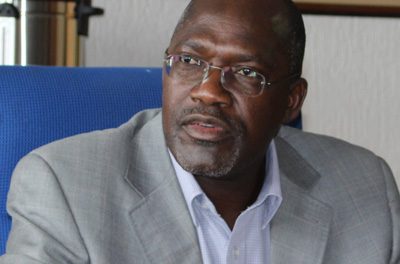
Namibia integrates global maritime safety by upgrading Navigational Telex system

Namibia has reached global maritime safety standards by upgrading it’s Navigational Telex (NAVTEX) system, which is considered a major milestone for the country as a coastal state and budding maritime logistics hub.
NAVTEX, is a navigational system used onboard the vessels to provide short range Maritime Safety Information on coastal waters and forms part of the Global Maritime Distress and Safety System which was developed by the International Maritime Organization in line with the International Convention for the Safety of Life at Sea (SOLAS) 1974, which Namibia is a Party to.
Global Maritime Distress and Safety System was developed to save lives at sea by modernizing and enhancing the maritime radio communications system through satellite and digital selective calling technology.
“I have no doubt that the investment into this state-of-the-art system will not only up our game in safety on our shores but keeps us compliant with international standards,” said Walvis Bay Deputy Mayor, Penelope Martin-Louw at the event last week.
Unlike the old maritime radio communication services, Global Maritime Distress and Safety System provides a more effective distress alerting system by: increasing the probability that an alert will be sent when a ship is in distress; increasing the likelihood that the alert will be received; increasing the ability to locate survivors; improving rescue communications and coordination; and providing mariners with vital maritime safety information.
Namibia is located near major international shipping routes and, over the last 10 years, the country has witnessed an increase in both visiting and passing maritime traffic. Namibia is positioned as the logistics hub for the SADC, which is home to about 200 million people and contributes about 30% of Africa’s GDP.
Deputy Minister of Works and Transport, James Sankwasa committed his ministry to continue to place strong emphasis on maritime safety and work with all partners, especially Ministry of Information and Communication Technology and Telecom Namibia, to support and improve maritime safety in Namibian waters through modern engineering and administrative solutions.
Fernando Somaeb, Chairperson of Telecom Namibia noted that delivering infrastructure installations and upgrades highlighted on the national agenda across the various sectors of the domestic economy is a key priority for Telecom Namibia.
“Telecom Namibia has always strived to provide advanced and reliable services to the Namibian nation and visitors to the country. Neighbouring countries rely on the sound performance of their networks and infrastructure to further provide services to users of information and communications technology services in their countries. In this case, ships in transit through Namibian waters would have the assurance that their communication would reach the Namibian contact centre,” Somaeb said.
Global seaborne trade is expected to triple in the next 30 years, which means Namibia will experiences greater opportunities as a port and coastal State but also greater risks of accidents and incidents at sea. Namibia is well poised to take advantage of future maritime growth.
Caption: James Sankwasa, Deputy Minister of Works and Transport, and Fernando Somaeb, Telecom Namibia’s Board Chairperson unveiling the NAVTEX station plaque.













































